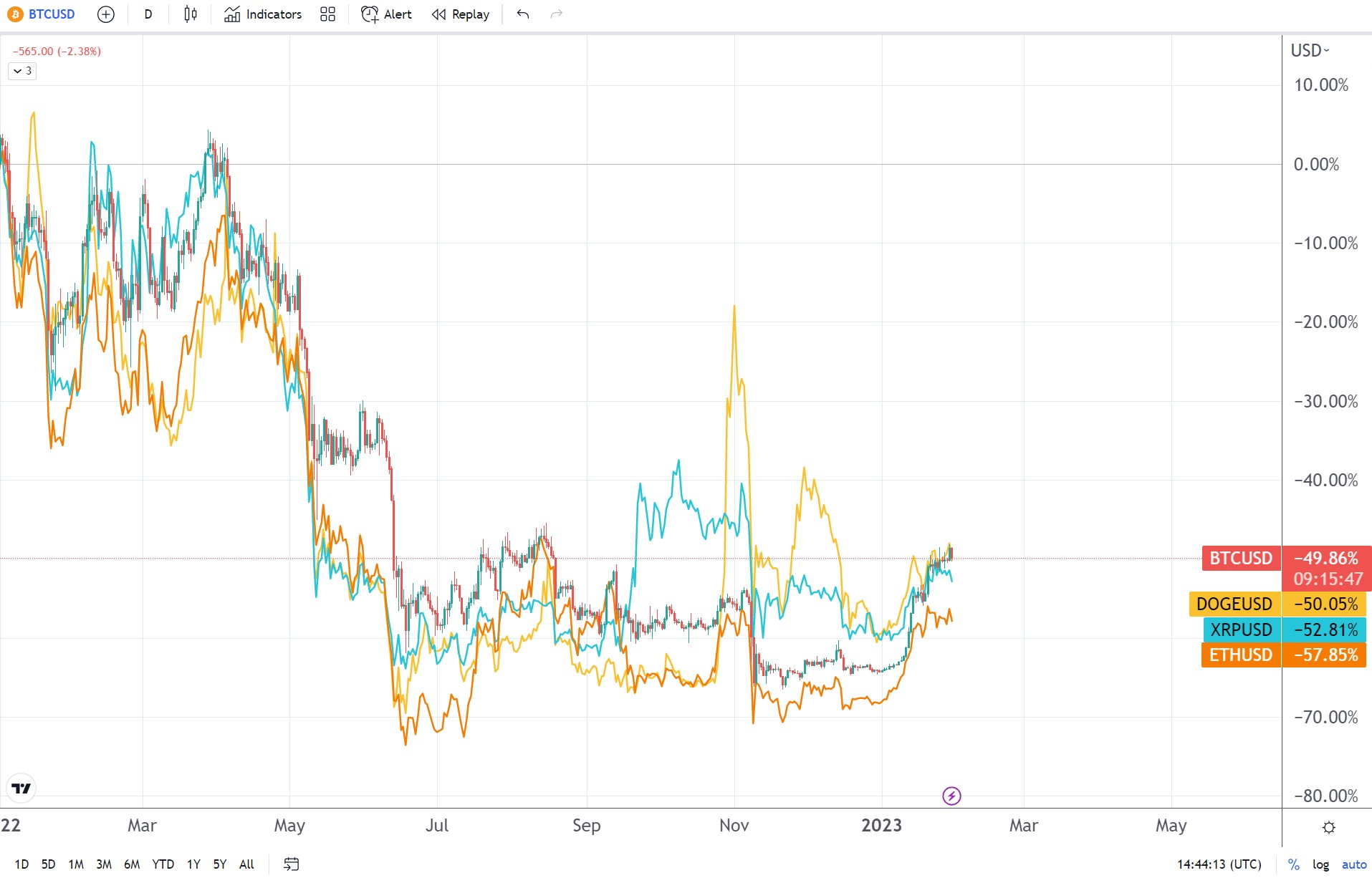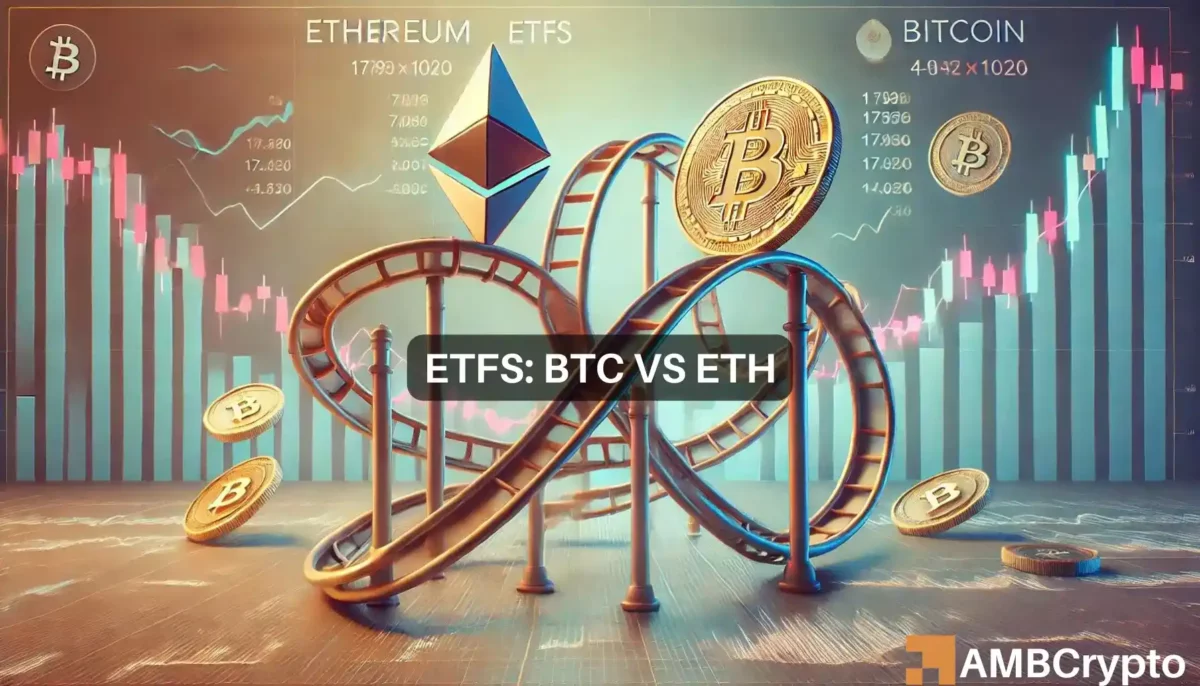eth btc analysis Understanding the Dynamics of Two Giants
eth btc analysis begins with a deep dive into the fascinating world of Ethereum and Bitcoin, two of the most influential cryptocurrencies shaping the landscape of digital finance. Their distinct histories, purposes, and technological foundations set them apart, creating unique ecosystems that attract traders and investors alike.
Over the past year, these currencies have experienced notable market trends, influenced by various events and shifts in investor sentiment. By examining their performance, technical indicators, and underlying blockchain technologies, we can better understand the potential strategies for navigating their complex market environments.
Overview of ETH and BTC
Ethereum (ETH) and Bitcoin (BTC) are the two most prominent cryptocurrencies in the market today. Launched in 2009, Bitcoin was designed as a decentralized digital currency to facilitate peer-to-peer transactions without the need for intermediaries. Ethereum followed in 2015, introducing a platform that allows developers to build decentralized applications (dApps) and smart contracts, thereby expanding the use cases for blockchain technology beyond mere currency transactions.The key differences between ETH and BTC lie in their underlying technology and intended use cases.
While Bitcoin primarily serves as a digital store of value and medium of exchange, Ethereum’s platform is geared towards enabling programmable transactions through smart contracts. Over the past year, both cryptocurrencies have experienced significant market fluctuations, influenced by various factors such as institutional adoption, regulatory scrutiny, and technological advancements.
Market Performance Evaluation
The price movements of ETH and BTC over the last six months have shown notable volatility. At the beginning of the year, BTC was priced around $30,000, gradually rising to a peak of approximately $60,000 before experiencing a correction. ETH, which started the year at around $2,000, also saw a rise to nearly $4,000 during the same period. These movements reflect the overall trends in cryptocurrency adoption and market sentiment.Several major events have influenced price changes for both cryptocurrencies.
For Bitcoin, the announcement of institutional investments from major companies like Tesla and MicroStrategy played a crucial role in driving up prices. Ethereum, on the other hand, faced price surges due to the growing popularity of decentralized finance (DeFi) applications and non-fungible tokens (NFTs) built on its platform.In terms of volatility, statistical measures indicate that ETH tends to demonstrate higher volatility compared to BTC.
This is partially due to Ethereum’s smaller market capitalization and its exposure to newer technologies that can experience rapid price shifts.
Technical Indicators for ETH and BTC

When analyzing ETH and BTC, traders commonly utilize several technical indicators to gauge market trends and price movements. Moving averages, particularly the 50-day and 200-day moving averages, are widely used. A crossing of the short-term moving average above the long-term moving average often indicates a bullish trend, while the opposite may suggest a bearish signal.Traders also look for specific chart patterns such as head and shoulders, triangles, and flags.
These patterns can provide insights into potential breakout points or reversal trends in the market.
Blockchain Technology Comparison

Bitcoin and Ethereum employ different consensus mechanisms to validate transactions on their networks. Bitcoin uses the Proof of Work (PoW) model, which requires miners to solve complex mathematical puzzles, leading to high energy consumption. Ethereum is in the process of transitioning to a Proof of Stake (PoS) model with Ethereum 2.0, which aims to improve scalability and reduce energy consumption.Scalability solutions also differ between the two blockchains.
Bitcoin’s Lightning Network allows for faster transactions by conducting off-chain transactions, while Ethereum is implementing layer 2 solutions like Rollups to enhance its transaction capacity.In terms of transaction speed and fees, Bitcoin transactions can take longer, especially during high network congestion, with fees ranging from a few dollars to over $20 at peak times. Ethereum transactions can also experience high fees, particularly during periods of heavy dApp usage, but generally, they offer faster confirmation times.
Investment Strategies

Investing in ETH and BTC can be approached through various strategies, including long-term and short-term investments. Long-term investors often adopt a buy-and-hold strategy, believing in the long-term growth potential of these cryptocurrencies. Conversely, short-term traders capitalize on price fluctuations, aiming to profit from quick market movements.The risks associated with trading ETH and BTC include market volatility, regulatory risks, and the potential for technological failures or hacks.
Despite these risks, the rewards can be substantial, with the possibility of significant returns on investment during bullish market conditions.Dollar-cost averaging and lump-sum investment methods are two popular strategies for investing in cryptocurrencies. Dollar-cost averaging involves investing a fixed amount regularly, which can mitigate the impact of price volatility. On the other hand, lump-sum investments can lead to higher returns if timed correctly but carry greater risk if the market declines shortly after the investment.
Regulatory Impacts
Regulatory environments significantly affect ETH and BTC, as different countries have varying approaches to cryptocurrency regulation. Countries like El Salvador have embraced Bitcoin as legal tender, while others, such as China, have imposed strict bans on cryptocurrency mining and trading.Government policies can also impact the adoption of both cryptocurrencies. For instance, favorable regulations can encourage institutional investments, while stringent regulations may stifle innovation and market participation.Recently, regulatory changes, such as the implementation of tax guidelines for cryptocurrency transactions in several countries, have influenced market dynamics by creating more clarity for investors and traders.
Future Trends and Predictions
Looking ahead, potential developments for ETH and BTC include advancements in technology and increased integration into traditional financial systems. Emerging technologies, such as cross-chain interoperability and decentralized finance, could significantly impact the future landscape of these cryptocurrencies.Expert predictions suggest that Bitcoin could see price movements driven by institutional adoption and macroeconomic factors, while Ethereum’s value may rise due to its growing utility in the DeFi and NFT spaces.
Analysts foresee potential price targets for both cryptocurrencies that could reach new all-time highs in the next year, depending on market conditions and technological advancements.
Community and Ecosystem Development
The growth of ETH and BTC heavily relies on community engagement and ecosystem development. Both cryptocurrencies have vibrant communities that contribute to their advancement through development, education, and advocacy. Notable projects, such as Ethereum’s various DeFi protocols and Bitcoin’s Lightning Network, illustrate the innovation occurring within their ecosystems. Developer activity remains robust, with thousands of developers continuously working to enhance functionalities and address challenges faced by both blockchains.
Epilogue
In summary, the journey through eth btc analysis highlights the critical differences and similarities between Ethereum and Bitcoin, shedding light on their market performances and future potential. As the cryptocurrency landscape continues to evolve, staying informed and adaptable will be key for anyone looking to invest or trade in these leading digital currencies.
Question & Answer Hub
What are the primary differences between ETH and BTC?
ETH focuses on smart contracts and decentralized applications, while BTC is primarily a digital currency.
How can I analyze the price movements of ETH and BTC?
Utilizing technical indicators like moving averages and chart patterns can help identify price trends.
What factors influence the volatility of ETH and BTC?
Market demand, investor sentiment, and regulatory news are key factors affecting their volatility.
What investment strategies should I consider for ETH and BTC?
Consider both long-term holding and short-term trading strategies, keeping risks and rewards in mind.
How do regulations impact ETH and BTC?
Regulations can dictate market dynamics, affecting adoption and trading practices across different regions.



